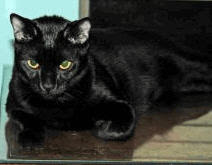Kitty City Feral Sanctuary, Inc.
Wednesday, July 25, 2012
Kitten Season and Feral Cats
Faring worst of all are the many feral cats and kittens living on the streets. Here at Kitty City, our goal is to help these forgotten cats, often viewed as a nuisance by the general public. It seems that everywhere you look, there are wild kittens at dumpsters, starving cats that obviously need some care but are afraid to approach you, and battered males roaming office and apartment parking lots.
These cats, especially nowadays with so many adoptables needing help, are often last on the list when folks think about contributing time, money, or effort toward animals' well-being. But they are what all cats are, before we - humans - get involved and make them into "pets." Contrary to popular belief, these feral cats are not miserable. This is their natural state. In the country, natural selection takes care of population control, and the cats can hunt effectively for food. However, in the cities, they often exist on the edge of starvation, scavenging in dumpsters and dependent upon the many feral feeders that provide food to the colonies they form when they band together for survival.
At Kitty City, our main goal is to keep feral cat populations in check so these cats can have a quality of life impossible to attain without our help. We have several colonies around the city and all are registered with the appropriate city agencies. We trap/spay/neuter/release and work tirelessly to raise awareness for these poor creatures that are so often misunderstood. But we need your help!
We are completely nonprofit and welcome donations of food, cash, supplies, and most importantly, VOLUNTEER LABOR at any time. Right now, during kitten season, we are out trapping continuously. We desperately need volunteers to mind the traps. Once cats are caught, one of us will come and pick them up, have them spayed or neutered, recover them in our homes, and then release them back in their colonies - but we don't have time to sit and wait for the wily critters to take the bait. As seasoned trappers know, these cats have highly developed survival instincts and often won't cooperate. It sometimes takes several days or nights without success to finally get your kitty. All of us also run shelters, or volunteer at shelters, or do adoptions, not to mention maintaining the unadoptables that will stay with us until they die - and we all have many. We need fearless souls, preferably night people, who are willing to hang out for hours and wait for traps to snap.
Please contact us if you are one of these intrepid souls. We'd be glad to hear from you!
Monday, April 18, 2011
Quinlan, a former BARC resident thanks you...
Quinlan the kitty was brought into BARC, the city of Houston animal shelter, by a nice young couple who found this super friendly cat in their apartment complex parking lot. Upon examining him, the shelter found he had some type of hip injury and sent out a plea for assistance.
Although KCF is primarily a feral cat sanctuary, there are times that we are able to assist with animals that need urgent assistance. In Quinlan's situation, many people were willing to help sponsor his care so that made it possible for KCF to step up and save his life. Otherwise, with an injury like he had, he would have been euthanized. Quinlan says thank you to those that gave to save one of his nine lives!
Friday, March 11, 2011
Kitten season is here!
So what is the cure?
Prevention is the only answer, spay and neuter. Did you know that over 70% of all cats entering shelters in the United States are killed? It does not matter how cute, how fluffy, or how sweet, the euthanansia needle does not discriminate. People acting responsibly and making the conscious decision to prevent unwanted litters in the first place, is the only true answer to the problem.
| (Credit: alleycat.org) |
Friday, February 4, 2011
Help KCF help the furry ones
Most of the permanent inhabitants have come from the city shelter facility, the cats are usually not adoptable due to behavior or illness and, if feral, may not be able to survive if released. The only option is death unless KCF can help. The economy has affected the sanctuary to some extent and financial assistance is needed. Please consider a donation to help KCF continue providing for those that are here and for helping to create the potential to allow them to help in instances where they advocate for other special needs animals.
In some instances, KCF helps to trap and provide spay and neutering for citizens who do not want the ferals in their communities to end up at the shelters, but would like to help improve their quality of life. In other instances, KCF may help with special needs animals, a dog or cat, that may not be adoptable due to needing veterinary care, or special needs due to behavior. KCF networks with others in the rescue community to help save these lives rather then allowing them to die in the shelter.
When you give, it goes further out to help then you will ever possibly know. All donations are tax deductible as allow by law, KCF is a 501(c)(3) non-profit. You can donate online by clicking on the donate button located on this page.
The rescue dog that you see in the photo, is one such recipient of assistance, she is alive today because KCF was there to help. Dumped by her owner, severely ill, with ten puppies, today she is in recovery and rehabilitation. Please do what you can.
It all matters.
Monday, October 18, 2010
Got Cats? Resources in the Community for Feral Cat Management
Okay, so how do I go about trapping?
Take a look at this "How To" put together by Cleveland Animal Protective League "How to Humanely Trap Cats for TNR".
In the Houston area, FCAP has a program that can assist you with TNRing in your neighborhood.
The Feral Cat Assistance Program (FCAP) is dedicated to educating the public on non-lethal ways of controlling feral cat colonies and assisting those interested in saving the lives of feral cats. They provide assistance with Trap-Neuter-Return (TNR) of feral cats to colonies sponsored by human caregivers. Each month (usually the last Sunday of each month) FCAP schedules a surgery day dedicated only to spaying and neutering feral cats at a local spay/neuter clinic. For more information on this program, please click here.
BARC, the city of Houston animal shelter also has a TNR program and Friends of BARC, the nonprofit organization that supports the shelter's fundraising endeavors, has a small spay/neuter voucher program that can assist citizens with the expenses of spaying or neutering feral cats. For more information on this program, please contact info@friendsofbarc.org.
There are many ways to resolve the feral cat issues in our community besides killing them, please consider the humane options available and work with some of the organizations actively involved with TNR in your local community now.
Let's stop the killing.
Tuesday, June 22, 2010
Kitty Myths
Myth: Pregnant women must give up their cats.
Fact: While toxoplasmosis is a risk for fetuses, a woman is more likely to catch it from handling raw meat or digging in the garden than from her cats. Cat guardians can protect themselves from cat-related exposure by emptying the litter box daily, having someone else clean the litter box or wearing rubber gloves and a mask if the litter box task can't be foisted onto anyone else.
Myth: Black cats are bad luck.
Fact: There are nearly as many superstitions about black eats bringing luck as there are about them being harbingers of bad luck. In different cultures around the world, other colors and coat patterns are seen as lucky - or not. However, in one 2000 study of 321 patients reported in the Annals of Allergy, Asthma and Immunology patients with dark-colored cats were up to four times more likely to suffer a moderate to severe allergy attack than those with light-colored cats. Researchers speculate that darker cats produce more fel d 1 allergen in their skin and saliva. So if adopters are mildly allergic to cats, it may be smart to steer them to lighter colored ones, leaving all the terrific black cats to those lucky folks with no cat allergies.
Myth: Cats have nine lives.
Fact: The myth most likely originated from Egyptian gods and religions, where sun god Atum-Ra, one of the Ennead, or the Nine would assume the form of the cat when visiting the underworld. Throughout the ages, cats continued to be considered magical and otherworldly, and their resilience in surviving falls from high places and long confinements without sustenance continue to amaze us.
Myth: Cats always land on their feet.
Fact: As a tree-climbing species, the cat's survival depends on its ability to survive falls when possible. The feline vestibular system and vision work together with the cat's flexible spine to allow the cat to right itself and, when there is enough time, to "parachute out" in a manner similar to the flying squirrel. While they can usually right themselves, they can still sustain serious injury to limbs, jaws and the thoracic region which may result in death.
Myth: A cat purrs when it is happy.
Fact: Purring is one of the first sounds kittens can make. They can purr by the time they are 48 hours old. While nursing, both mom and kittens can be heard to purr. But while purring is often heard at times of contentment, cats also purr when in pain and in the throes of death.
Myth: Cats hate water.
Fact: While most cats hate baths, many find running water fascinating and spend time pawing at dripping faucets or demanding their guardians turn on the water for a fresh, cool drink. Kittens, in particular, find sinks and showers a source of amusement, although for most the thrill lessens with age. One breed, the Turkish Van, is nicknamed "the swimming cat" for its swimming prowess and love of all things wet.
Myth: Cats are nocturnal creatures.
Fact: Cats are crepuscular most active at dusk and dawn when prey abounds and the hunting is best. The construction of their eyes allows them to see well in low light. Cats only need 1/6 of the light humans do in order to decipher shapes. However, they cannot see in absolute darkness.
Myth: Cats are loners.
Fact: Outdoor cats are solitary hunters, but most will choose to live in a colony near a food source. Unneutered males will roam the farthest, in search of food and females in heat. Studies of barn cats showed matrilineal groups were created by a founding female, her daughters and their kittens. When males reach approximately eighteen months of age, they leave the area and strike out on their own. The kittens of domesticated house cats are best prepared to fit into a multi-cat household when they are kept with their littermates until at least eight- to ten-weeks of age.






